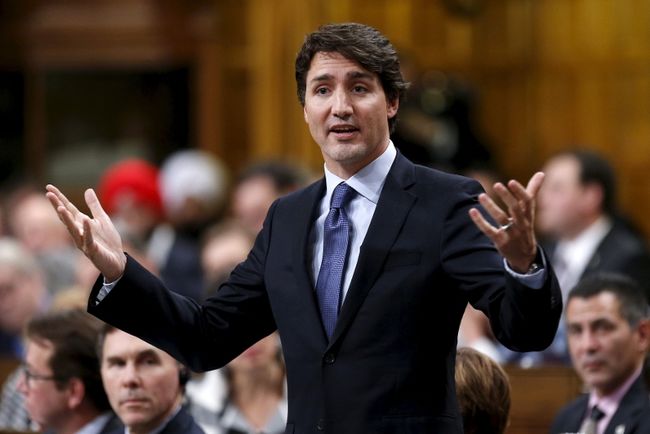The Liberals released their full platform this week, and what is immediately noticeable in it is just how much back-patting there is throughout. The Liberals are very much running on their record in this election, and they want you to know how much they got done, as a prelude of what they plan to do going forward. This being said, when compared to the other two main platforms, the Liberals have a lot less hand-waving around their promises, in part because much of what is in their plan is built off of what is in Budget 2021 – and with good reason. But it’s also carrying on the theme that a lot of the mainstream commentariat seems blind to, which is inclusive growth.
To be sure, much like the other two parties, there are a lot of promises to work with provinces in order to accomplish specific goals, but unlike the other two parties, the Liberals are less eager to sign over blank cheques – or fiscal transfers – and are more interested in attaching strings to these dollars in order to get specific outcomes. This is important because while provinces may balk, it sets minimum standards and has some base level of accountability for the federal dollars that get transferred. This remains one of the biggest differences between the parties – those who are counting on the good will of premiers to do the right thing with those federal dollars in spite of a history that has shown that provinces will spend their health transfers on things that aren’t healthcare and which don’t fix the problems in the system, and the Liberals, who ensure that there is verification along with trust.
It’s also worth noting that the Liberals are planning on introducing specific amendments to the regulations attached to the Canada Health Act to ensure better abortion access in the provinces. While this stems largely from a dispute in New Brunswick where abortion access is limited to three locations and a private clinic was established in Fredericton to meet the needs of women in that region, which the province refuses to fund or reimburse. While the federal government has withheld portions of the province’s health transfers equal to the fees the clinic charges (clawbacks which were suspended during the pandemic), the fact that they want to place this in the regulations is a sign that is absolutely a wedge, but one that will work because Conservatives keep bringing forward private members’ bills designed to limit abortion in one way or another, and their own platform boasted of “conscience rights.”
There are also instances where they commit to not backing down on several of their established plans, such as bringing back the proposed changes to the Broadcasting Act to capture web giants – which the other parties agree with to an extent (the Conservatives’ only real objection is apparently in demanding that YouTube be exempt), and reviving their proposals on combatting online hate (which have some problematic elements), bringing in Australian-style legislation to force those web giants to the table when it comes to paying for journalism, and reviving their legislation to eliminate many of the mandatory minimum sentences that disproportionately impact Black and Indigenous populations. And of course, they commit to moving ahead with their child care plans and carrying on the work of establishing national pharamacare (presuming they can get the other nine premiers on board).
But it’s the particular policy planks dedicated to women, Black Canadians, the disabled, the LGBT+ communities that seem to have confused some of the punditry around the platform. For example, Paul Wells considers this all to be the pinnacle of micro-targeting voters to ensure that they have announceable policies specific to them, and considers the platform incoherent as a result:
A platform used to be a proposed program for government that was designed to show a political party had thought clearly about a modest number of important files. Coherence and practicality were virtues. These days I think coherence couldn’t matter less, because the goal is to have hundreds of proposals you can send to previously-identified voter cohorts.
What Wells misses is that there is a coherent theme to it that’s right in the title – “Forward, for everyone” refers to inclusive growth. Traditional platforms are mostly for middle-aged straight white males who are looking for tax cuts (and we especially saw this after Budget 2021, where a group of business interests calling themselves “Coalition For a Better Future” are convening a summit on future growth because the budget didn’t have enough tax cuts for their liking). If the Liberals are going to demonstrate they are in it for inclusive growth, they need to show how, which is one reason why the document includes Gender and Diversity Impact Summaries at the end of each section. Inclusive growth means you can’t just have the same old, and they are doing the homework to show that they understand what it means.
If anything, the fact that you have mainstream voices like Wells not clueing into the broad theme of this platform shows that Trudeau and the Liberals are underselling the inclusive growth aspect (just as they have undersold the need for the election given the five months of procedural warfare that stalled virtually all bills, and the partisan dickishness that consumed the committees). They also undersold it with the budget as well, which hasn’t been helped by a commentariat that remains stuck in the belief that it’s 1995 and will always be 1995, and that those solutions are the solutions for the current reality we find ourselves in. There is a case to be made for “building back better,” and working to fix the cracks in our social fabric that the pandemic exposed – but they need to actually articulate that case in a clear and bold manner. Thus far, they’ve focused too much on the wedges and not enough on the vision, and that could be what costs them ultimately.







